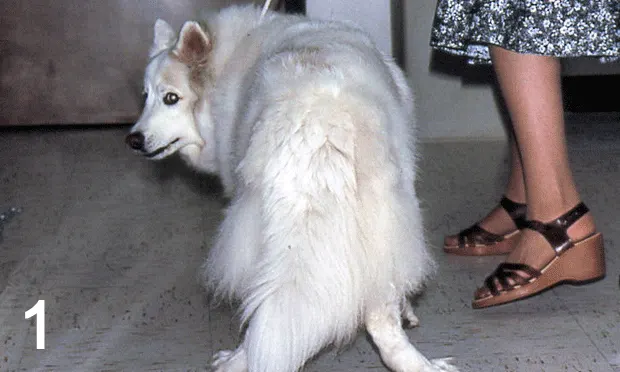Diabetic Neuropathy in Dogs

Diabetic neuropathy is less commonly seen in dogs than in cats. Furthermore, clinical signs in dogs differ from those in cats. Primary clinical findings in cats are plantigrade posturing, subtle muscular weakness, neurologic deficits, and muscle atrophy; those in dogs include chronic and progressive hindlimb weakness that can also involve the forelimbs. This degree of weakness varies from mild paraparesis (Figure 1, above) to more severe involvement with tetraparesis and tetraplegia (Figure 2). Other signs include knuckling, hyporeflexia, muscle atrophy, and weakness.
Causative factors, as defined in animal and human studies, are controversial. They may include multiple mechanisms involving vascular factors, metabolic derangement of the Schwann cells, and primary axonal disease.
Metabolic factors are thought to involve myo-inositol deficiency, sodium-potassium
adenosine triphosphatase, or excessive glycosylation of proteins. This abnormal glycosylation has been shown to involve the vasa nervorum, which compromises blood flow to the peripheral nerves.
There is no definitive treatment for diabetic neuropathy other than insulin therapy. The dose should be titrated to maintain blood glucose in an acceptable range of 150 to 250 mg/dL. Mild cases should resolve over several weeks to months. However, more severe cases, as shown in Figure 2, require extensive physical therapy, including massage, extension and flexion movements, and owner- or trainer-assisted swimming. With such comprehensive support, the dog should improve over several months (Figure 3).